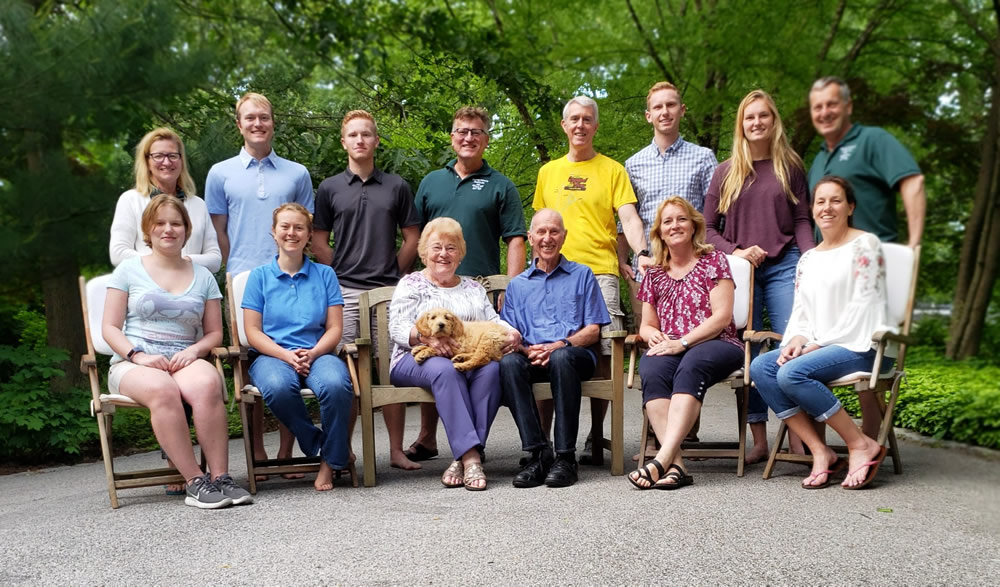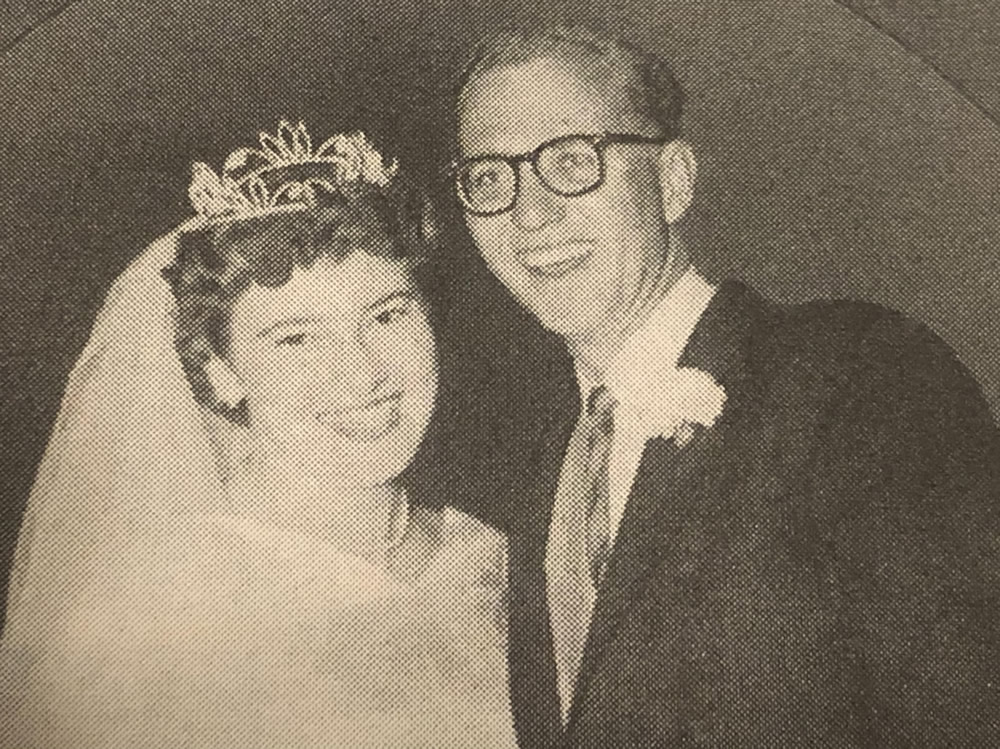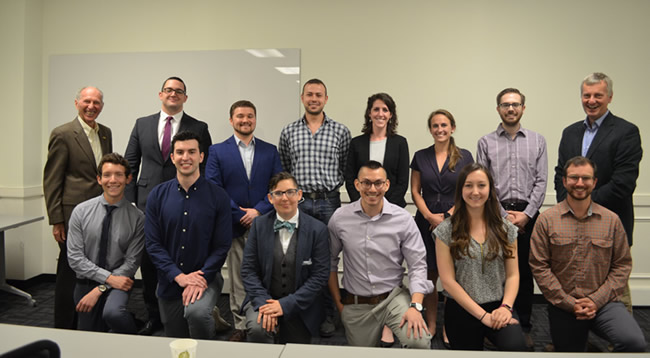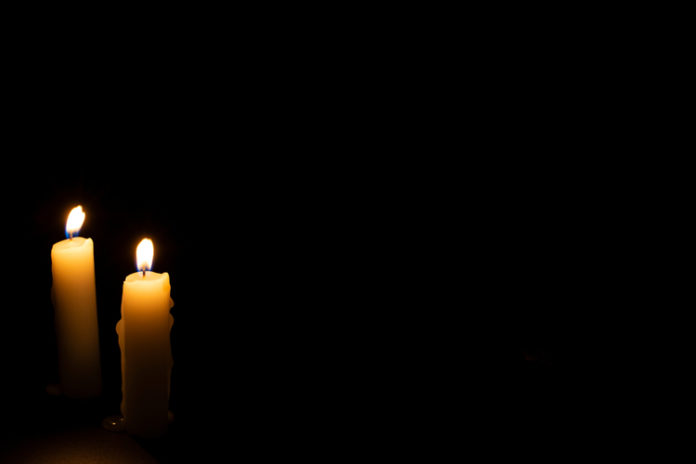By Chris Kelsey – The engineering community is mourning the loss of two of its most influential champions: Dr. Robert M. Koerner and Pauline W. Koerner. The couple, who had recently celebrated their 60th wedding anniversary, and who were well known throughout the world for their deep contributions to geosynthetics and engineering and education-centered philanthropy, passed away in early December.
Condolences have come in from all over the world. We at Geosynthetica are deeply saddened by the loss; but, we are also immensely grateful for the opportunity we’ve had to learn from Bob and Paula and the larger Koerner Family, who continue their work in the engineering community.
For me, this is an especially hard task to summarize Bob and Paula’s lives and how much they have meant to me; but the difficulty of this task is one that I know would entertain them. They enjoyed issuing challenges that made others better.

READ THE IN MEMORIAM FROM THE GEOSYNTHETIC INSTITUTE (PDF)
ROBERT KOERNER & GEOSYNTHETICS
Dr. Robert Koerner is most well known for his tremendous contributions to advancing the field of geosynthetics. He worked closely with engineers and especially with manufacturers in the late 1970s and early 1980s. This was a period in which the terminology we use today was only beginning to be adopted, if it existed at all. Dr. JP Giroud coined the terms “geomembrane” and “geotextile” in 1977 at a conference in Paris. It was a watershed moment. Not long afterwards, Robert Koerner co-authored with Joseph P. Welsh the world’s first text on geosynthetics: Construction and Engineering Using Synthetic Fabrics (1980).
Of course, it was a subsequent publication that truly put Robert Koerner on the map: Designing with Geosynthetics. The first edition was published in 1986 and sold 3200 copies. It became a calling card for the geosynthetics field for a new generation of practitioners and inspired many other authors to contribute texts to the field, while Dr. Koerner’s research and teaching position at Drexel University helped establish a yardstick by which geosynthetic education in engineering curricula could be measured.
Symbiotically, the Designing with Geosynthetics textbook and the IGS Journals of Geotextiles & Geomembranes and Geosynthetics International grew together, with the journals becoming two of the most respected and cited geotechnical engineering publications in the world. And as that process occurred, Paula and Robert Koerner began another key venture that would provide exceptional leadership to this fast-growing engineered materials field: The Geosynthetic Institute.
The 1986 establishment of GSI provided a home for research, the development of accreditations (e.g., Geosynthetic Accreditation Institute – Laboratory Accreditation Program), white papers, technical conference organization, and some of the most influential manufacturing quality control guidelines.
Subsequent editions of Koerner’s main textbook were published in 1990, 1994, 1998, and 2005.
As the field accelerated, a sixth edition was very much merited; but, with the field becoming full of engineering textbooks and programs struggling to add more content to their curricula, Bob found the assurance of a sixth edition’s release and proper promotion less certain … especially considering how greatly he’d expanded it to reflect the tremendous growth in the field’s innovation and reach in civil engineering.
In a very Koerner move—strong-willed, all-in—he re-acquired the rights to his work in full and self-published a sixth edition of Designing with Geosynthetics (2012), including with a low-cost digital edition. It was an entirely unheard of approach in engineering academia. He was sacrificing the “prestige” of a very pricey textbook to make it far more accessible to students and practitioners around the world.
“It isn’t for profit,” Bob wrote to Geosynthetica on the publication of the sixth edition.
As unique of a publishing approach as it was for the content and the book’s legacy, it was not necessarily a surprising development. It was, in fact, absolutely everything that Robert Koerner, Paula Koerner, and their deeply involved family had positioned them for with the Koerner Family Foundation. KFF was set up in 2001 and initiated a program that has to date funded more than 100 fellowships for geosynthetics and affiliated engineering research in the United States (up to USD $5,000 per fellowship).
Engineering philanthropy had become a major focus of their work. For Dr. Robert Koerner, who had authored and co-authored hundreds of papers and received nearly every honor available to a geotechnical engineer in the United States and within the international professional societies to which he contributed, another feather in his cap with a textbook was certainly not as important as education itself. That was the real legacy.
HOW MUCH DID ROBERT KOERNER CONTRIBUTE? HIS OFFICIAL CV WAS 65 PAGES!(PDF)
He and Paula were believers in sharing knowledge and energy: affordable digital publishing, open access to white papers and guidelines, webinars, research grants, and so much more.
Here’s a related publication about which many do not know: Bob and Paula utilized the same self-publishing system for the publication of their authobiography: Bob & Paula Koerner: A Success Story. The book focuses on their family histories, unique figures who helped shape their paths (family, friends, colleagues), and the all-around inspirational story of love, family, and hard work that define them. It also has plenty of side notes about the geosynthetics field (publications, events, people, etc.).
In that way, it is somewhat of an addendum to the history of the discipline.

WORDS FROM THE FIELD
“He was to me the most honorable man I ever met, with his heart on the right spot. He never let you feel that he was a highly decorated person or was more than anyone else. To me, he was more than the Geosynthetic Expert. He opened his heart and let me [and many others] into his family life. Thank you Bob and Paula for all you did for us and me. Gott helfe weiter.” – Kent von Maubeuge, Director of Corporate Identity, NAUE Group. In 2018, Kent was selected to deliver the Robert Koerner Lecture.
“Like so many, I came into the industry with very little knowledge of geosynthetics. I was fortunate to meet Dr. Koerner early in my career and attend many of the GSI yearly conferences. Dr. Koerner’s tireless effort to educate and inform so many on geosynthetics was a great benefit to our industry. I also considered Bob a wonderful friend and he will be sorely missed.” – John Henderson, President, TenCate Geosynthetics.
“Bob is literally the only scientist/researcher that I have ever known who dealt completely with both scientific theory (unproved hypothesis, laboratory data, etc.) and the real world reality of how the materials were used and performed in the field. If everyone did this, the world would be a much better designed place!” – Boyd Ramsey, engineering consultant
“We mourn and honor a person of not only great technical contribution, but of great example of how to live an intentional life of honor, dedication, imagination, work ethic and fun! He leaves an industry that will always define itself closely with his technical contributions and professional leadersip. Bob was always present in the moment with you, giving his entire being, time and care to listening, guiding, and teaching you. I cannot remember a time that I didn’t feel refreshed and re-enthused after speaking with him. His legacy for us all is steeped in the traditions of excellence and honor. He will forever be the perfect example to strive for of a life well lived. Thank you Dr. Koerner!” – Sam Allen, Vice President of TRI Environmental. TRI was the first geosynthetics testing laboratory in the world to receive accreditation from GSI’s GAI-LAP program.
A PERSONAL NOTE FROM THE EDITOR
The Koerner Family has been immensely welcoming and supportive of me over the years. I was fortunate to know Bob and Paula for nearly 20 years. In this time, I’ve been able to learn from and know personally many of the most influential figures in the formation of the geosynthetics field and know its successive generations. The Koerners were inextricably part of that.
The last time I saw the Koerner Family in full was in Chicago in 2016 at a conference (GeoChicago). The Koerners arranged a three-mile morning run along the lake, and Bob graciously ran with me much of the way while I held him back with my lack of conditioning. (Even in his 80s, Bob remained an exceptional distance runner. If you want to know how good he was, check out the book he and Paula published. He lists his various distance bests at the time of publication, including for a marathon.) I struggled to converse, running through the city of my upbringing. I was overwhelmed not only by being home after a very long absence but by the physical toil that Bob, his magnificent son George, and the impossibly conditioned college-aged Koerners were putting me through. (Geosynthethic containment consultant Boyd Ramsey did very well on the run, I must note.) Bob, however, was without trouble. He apologized to me that he couldn’t make eye contact while we talked.
“At my age, I need to watch my feet more,” he said, as we passed Buckingham Fountain.
I laughed as much as my limited lung capacity would allow.
I cherish the memory of that run and the time I spent with the Koerner Family at that event. I truly do.

In September 2019, I talked with Bob about trying to visit him at GSI, but our schedules couldn’t match up in October or November. Part of me wishes for that one final meeting; but I know it wouldn’t change anything about how I feel.
Bob and Paula were exceptional.
My years in geosynthetics with them have been immensely gratifying and fascinating. And it isn’t just Bob and Paula. I have to emphasize: It is the Koerner Family. They are vitally connected to the enjoyment and wonder in my daily work, in the ways my work has beneficially impacted my happiness in life outside of work (How can the people you work with not influence that?). I’m thankful I get to continue learning with the Koerners through the Geosynthetic Institute and the Koerner Family Foundation.
**
In my early years working in geosynthetics, Bob sent me a column. This was late 2002 or early 2003 when I edited GFR. (I was later part of rebranding the publication as Geosynthetics magazine in 2005 before leaving to work in exclusively digital endeavors.) I don’t recall the topic of this particular column, as Bob supplied up to 9 per year at that time, but it was likely related to either biplanar and triplanar geonets (as I received angry letters from the proponents of one every time I published something related to the other) or polypropylene geomembranes (which as I recall were engulfed in disagreements about testing times back then). Bob called me immediately after sending the column by email. He was feeling quite jovial that afternoon, which was usually his manner when we talked, whether by phone, email, or face to face.
“This one has flies on it,” he said, laughing. “I know you editor types like that.”
His point was that it was a column that would inspire some firm responses, which meant that maybe my circulation and ad sales departments would celebrate the content. It also meant that for the editor, be ready. He was having fun with me. He knew it could complicate my relationships in the industry and that I should be ready for that. He also wanted me to welcome that debate. It was part of the essential spirit of real progress.
Public discussion mattered. What a truly noble Philadelphian idea!
Bob and Paula really were those people. There was never artifice with them. They were encouraging. They were courageous. They were incredibly hard working. They were critical. They were engaged.
They were what nearly all of us aspire to be, and what the great many of us already are but struggle to recognize within or acknowledge about ourselves. Bob and Paula want you to. They want you to see your potential, to challenge yourself, and to achieve. They want you to acknowledge your positives, accept failures, and keep getting better. They want you to be human, which is to be full of possibility.
Be energetic. Be interested. Be forces for positive change and forces to continue the good we are already doing collectively.
In closing, I quote the Koerner Family’s words from a private message:
“[Bob and Paula] were heroes in the world of engineering education and research. Please remember the good times and pass it forward.”
I will. I trust you, the reader, will too.
PLEASE TAKE A MOMENT to reflect on the lives of Bob and Paula Koerner and learn more about the Koerner Family Foundation. Get involved in the development and support of engineering education and research. Visit www.kffoundation.org.

Chris Kelsey has edited and written for Geosynthetica since 2006.












